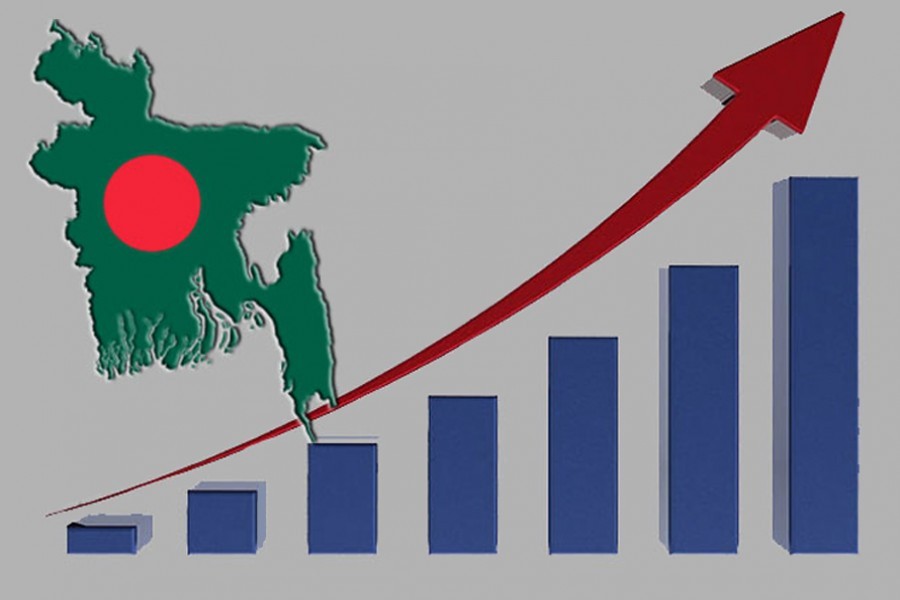The World Bank expects Bangladesh to recover gradually from the pandemic crisis, with 5.1 per cent growth in the fiscal year 2021-22 on the back of 3.6 per cent in the outgoing financial year ending Jun 30.
Private consumption, the main engine of growth, is supported in the country by normalising activity, moderate inflation, and rising ready-made garment exports, the global lender said in its June 2021 Global Economic Prospects published on Tuesday, reports bdnews24.com.
In the South Asia region excluding India, the recovery is expected to be weaker than its historical growth average, with GDP growth at 3.1 per cent in FY22 and 4.0 per cent in FY23.
In the decade prior to the pandemic, growth in the subregion exceeded 5.0 per cent; however, COVID19 outbreaks and mobility restrictions, weak confidence, and potential output losses make this growth performance “seem unattainable in the near term”.
The recovery in South Asia has been faster than expected. Activity in most sectors has overtaken pre-pandemic levels, despite rising COVID-19 cases—including in construction, one of the initially hardest-hit sectors.
Output in retail and wholesale trade, and hotels and restaurants, however, was still lower than the pre-pandemic level, the World Bank said.
Although nearly all countries in the region have begun vaccinations, progress has been slow, and the region’s largest economies—Bangladesh, India, and Pakistan—have vaccinated only a small fraction of their populations.
Bhutan and the Maldives, however, have managed to vaccinate more than half of their populations.
Recoveries in Bangladesh and Pakistan face new headwinds from a recent rise in COVID-19 cases accompanied by rising restrictions to stamp out the new surge.
Mobility around places of work and retail has again dropped below pre-pandemic levels, according to the report.
POVERTY AND RISKS
The pandemic is expected to leave a legacy of higher poverty in the region. Tens of millions of people are anticipated to fall below the $1.90-a-day extreme poverty line this year, the World Bank said.
Further deprivation could come from higher food prices as global agricultural commodities have risen 30 percent over the past year.
Adding to the adverse impacts, fixed investment is expected to be 10 percent below pre-pandemic trends, schools have been shut for about one-third of the duration of the pandemic, and an estimated one-tenth of labour hours have been lost.
“With the recovery in early stages and the pandemic continuing to spread, the outlook is highly uncertain,” the World Bank warned.
Downside risks stem from high government debt, upward pressure on food prices, financial sector challenges, and the uncertain trajectory of COVID-19 and vaccination.
Global financial conditions, while currently accommodative, could change if advanced economies tighten monetary policy before recoveries are entrenched elsewhere or global inflation rises unexpectedly, the report said.
Domestic financial sector stress remains a significant downside risk in the region, as nonperforming loans were high prior to the pandemic in the region’s largest economies.
The intersection of higher food prices and outbreaks of COVID-19 poses significant risks to vulnerable communities.
Meanwhile, the global economy is expected to expand 5.6 percent in 2021, the fastest post-recession pace in 80 years, largely on strong rebounds from a few major economies.
However, many emerging markets and developing economies continue to struggle with the COVID-19 pandemic and its aftermath, the World Bank said.
Despite the recovery, global output will be about 2 percent below pre-pandemic projections by the end of this year. Per capita income losses will not be unwound by 2022 for about two-thirds of emerging market and developing economies.
Among low-income economies, where vaccination has lagged, the effects of the pandemic have reversed poverty reduction gains and aggravated insecurity and other long-standing challenges.
“While there are welcome signs of global recovery, the pandemic continues to inflict poverty and inequality on people in developing countries around the world,” said World Bank Group President David Malpass.
“Globally coordinated efforts are essential to accelerate vaccine distribution and debt relief, particularly for low-income countries. As the health crisis eases, policymakers will need to address the pandemic’s lasting effects and take steps to spur green, resilient, and inclusive growth while safeguarding macroeconomic stability.”


